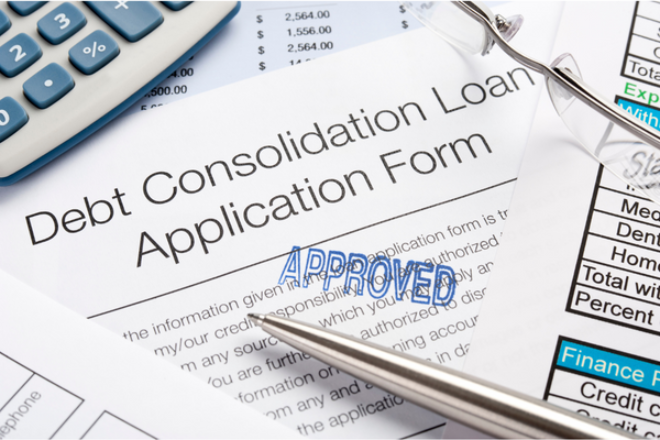Debt consolidation allows consumers to take multiple debts and consolidate them into a single debt with a single payment. Generally, debt consolidation strategies are used either to lower total cost by paying less in interest over time or to improve cash flow by reducing the monthly payment amount. The two objectives aren’t necessarily in conflict; often debt consolidation achieves both.
Reduce Interest Cost
Reducing interest costs is often the primary objective of debt consolidation. It’s not uncommon for people to find themselves with multiple high interest rate debts. This may be an opportunity to save money by consolidating these debts into a single loan at a favorable interest rate.
This strategy works best when the consumer has been paying their debts on time and has good credit. It can still work with lower credit scores, but it is less likely to be an option for people with poor or very poor credit.
Improve Cash Flow
The other major impetus for debt consolidation is to improve cash flow. Often people find themselves struggling with the debts they have accumulated. The combined payments put a strain on the budget, and it’s difficult to make ends meet. A debt consolidation loan may help by replacing the high payments with a single payment that is lower than the total of the others.
This strategy also works best when implemented with good credit.
Consumers shouldn’t wait until they can’t make the payments; they need to consider consolidation before they damage their credit.
Consolidation Risks
The biggest risk in debt consolidation is failing to address the root cause of the problem. If failing to live within your means is the cause of your excess debt, consolidation may postpone the inevitable reckoning, but it will still come.
In many cases, excess debt is not a result of overspending on consumer items. It may be from uninsured medical debt or another unforeseen emergency.
No matter what the cause of excess debt, consumers should build an emergency fund and work within a budget to protect against a recurrence of excess debt.
Form of Debt Consolidation
Traditional debt consolidation involves a debt consolidation loan from a lending institution. One common alternative is to use no-interest or low-interest credit card offers in succession, but that strategy is fraught with risk. There is no assurance that such offers will always be available, and consumers may end up with high interest again at an unexpected and unwelcome time.
Reducing risk involves removing unknowns and using credit cards as a debt consolidation strategy has unknowns and therefore risk. It would also work only for consumers with good credit, who would be able to qualify for an attractive debt consolidation loan.
One alternative form of debt consolidation is to use home equity.
Some people who might not qualify for a low rate on an unsecured debt consolidation loan may be able to get a more favorable home equity loan. Not always, it will depend on individual factors. Naturally, this has specific additional risks over an unsecured loan, and not everyone has a home with equity to borrow against.
Alternative Form of Debt Consolidation
Another alternative is to use a 401(k) loan, or equivalent if you have a different retirement plan with a loan provision. The biggest advantage is that these loans are not dependent on your creditworthiness. You can get a loan from your 401(k) even if your credit is in the tank. Naturally, this strategy also has disadvantages and additional risks.
When you borrow from your 401(k), the funds you borrow are no longer invested. You miss out on any gains you might have attained had you not taken the loan. This would likely be a period of years, and the missed opportunity could be significant.
If you quit your job or lose your job, you may end up with tax liability from the loan. You may end up with a premature distribution penalty in addition to the tax. Suddenly something designed to help you becomes a nightmare. Debt consolidation via 401(k) loans is done regularly with success. But it has additional significant risk, and some people end up with bigger problems than they started with, so caution is appropriate.
The Bottom Line
Debt consolidation can save people a lot of money through reduced interest charges. Debt consolidation can be a lifesaver for people struggling under excess debt. But like any significant financial change or financial opportunity, it should be done only after thorough examination of the options and the risks.
If debt is allowed to continue to accumulate, people may find their options become fewer and the risks greater. A debt reduction strategy to improve tight cash flow should be undertaken before there’s a major problem and damage is done to credit.
Debt consolidation should be done in the context of a consumer’s total financial situation. If debt is a problem, debt consolidation can be a great fix. Financial literacy, and its focus on budgeting and money management, can then help prevent the problem from becoming a cycle.




